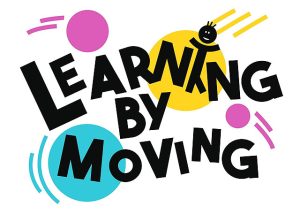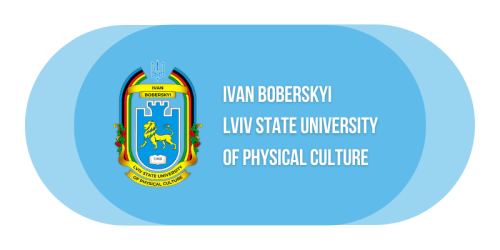

Project name: Learning by Moving! Innovative and Interdisciplinary Teaching Methods in Preschool and Primary Education (LERMOV)
Project number: 2024-1-PL01-KA220-HED-000250640
Project implementation period: 01.09.2024-28.02.2027
International program: Erasmus+ KA220 HED – Cooperation partnerships in higher education, Co-funded by the Erasmus+ Programme of the European Union.
Project goal: introducing and developing evidence-based, innovative, and interdisciplinary methods in working with children aged 5-10 years, including those with special educational needs and adaptation problems, to enhance teachers’ and pre-service teachers’ competencies in innovative methods of learning and teaching. The projects’ methods combine the learning process with PA to promote and support student’s academic, motor, cognitive, emotional, and sociomoral development.
Project impact: the results of the project will be to raise the competencies of teachers and students by introducing innovative teaching methods confirmed by micro-credentials, the book «Learning by Moving! Innovative and Interdisciplinary Teaching Methods in Preschool and Primary Education», and a course syllabus «Learning by Moving!». Incorporating interdisciplinary methods of teaching children through physical activities is an aspiration to create more interactive and effective educational environments.
The objectives of this project are:
- To enhance university students’ and teachers’ skills and competencies in applying innovative, interdisciplinary, movement based teaching methods in preschool and primary education for children aged 5-10 and equip them with practical tools and strategies for implementing these methods effectively within their teaching practice, confirmed by micro-credentials.
- To support the professional development of academic staff by providing them with advanced knowledge and tools to incorporate innovative teaching methods into their educational practice.
- To establish a framework for the certification of competencies developed during the training through micro-credentials recognized across the EU.
- To enhance the skills and abilities of the project team in managing and resolving international projects.
- To develop a range of educational materials, including the book, to facilitate using these innovative teaching methods by teachers and students trained during the project by all partners.
- To create an adaptable syllabus that can be implemented across different disciplines and contexts in higher education. Ensuring the accessibility and inclusivity of teaching materials for all students and staff, including those with disabilities or special educational needs.
- To widespread dissemination of project assumptions, teaching materials, and publications to the higher education community and beyond, ensuring that knowledge of innovative methods reaches a broad audience.
- To encourage the exchange of knowledge and best practices among educators from different countries to enrich the learning experience and to build a network of institutions dedicated to advancing innovative, interdisciplinary, and evidence based teaching in preschool and primary education across the European Union and beyond.
The project aims to address key needs of European preschool and primary education:
- Need to develop teachers’ and pre-service teachers’ competencies: The project aims to develop teachers’ competencies through training and workshops that will enable them to effectively implement new teaching methods. As a result, teachers and students will be better prepared to work with diverse groups of students and increase their teaching effectiveness. Using movement-based teaching methods is crucial for implementing pedagogical/didactical innovations and promoting students’ holistic development.
- Lack of professional preparation of teachers to integrate cognition and movement: Preschool and primary education are crucial in molding a child’s future learning and personal growth. These stages are the building blocks for a child’s cognitive, physical, and emotional development. As classrooms become more diverse and student needs evolve, traditional teaching methods may no longer be sufficient. Our project aims to enhance teachers’ ability to introduce innovative teaching methods incorporating movement, which are more effective at promoting the children’s cognitive, motor, emotional, and socio-moral development.
- Adapting teaching methods to diversity in the classroom: Ensuring that students with different learning levels, physical abilities, and special needs are included in the classroom is critical to promoting educational equity. Additionally, the integration of migrant and refugee children in schools can be challenging in countries like Poland, Greece, and Italy. The project aims to promote social and educational integration through innovative teaching methods, making education accessible to all students regardless of their challenges.
- 4. Preventing decreasing PA and reducing anxiety: It is crucial to encourage PA to prevent the negative effects of sedentary lifestyles, increased use of technology and social media, and the long-term impact of pandemics on children’s physical and mental health. Additionally, situations such as armed conflicts, migration, and unpredictability can lead to
increased anxiety among children and youth. This project aims to use movement as a therapeutic technique to reduce these symptoms and promote the holistic well-being of students. - 5. The need for international cooperation in education: The project aims to facilitate international collaboration and the exchange of experience among teachers and specialists from various countries. The initiative involves experts from Poland, Greece, Italy, and Ukraine working together to create an educational model that can be adapted and implemented in diverse cultural and educational settings.
In response to these needs, the project has the ambition not only to increase the effectiveness of the teaching and learning process in preschool and primary education but also to contribute to building more inclusive, flexible, interdisciplinary, and innovative educational systems in Europe.
The project’s target groups are students and teachers in higher education and external stakeholders related to education, sport, and health. The project aims to benefit individuals from the local, regional, national, and European communities.
More specifically, the main project targets are:
- Members of project teams in each partner organization (21 people)
- University students and academic teachers participating in training (1260 people)
- External stakeholders: representatives of government institutions: City Hall, Marshal’s Office, Board of Education; educational organizations: Teacher Training Centers, Preschool and early childhood education support institutions, local and regional universities, elementary school and preschool principals and teachers, sports organizations and associations, local, regional, and national communities (280 people)
- Project’s volunteers (42 people)
- Recipients of teaching materials (min. 3000 website and video views and min. 2000 downloads)
- Recipients of the project results (min. 1000 institutions).
Our project will reach a wide audience by promoting it across various channels, including social media and websites, and published teaching materials and e-book «Learning by Moving! Innovative and Interdisciplinary Teaching Methods in Preschool and Primary Education» in English as well as the native language of each partner. The wide target group will be students and teachers in higher education (not participating in the project), pedagogues, psychologists, schoolteachers, principals, members of sports clubs, parents, and caregivers.









Project Coordinator: Wroclaw University of Health and Sport Sciences, Poland
Project partners:
- Adam Mickiewicz University, Poland
- Aristotle University of Thessaloniki, Greece
- The Maria Grzegorzewska University, Poland
- University of Rome «Foro Italico», Italy
- University of Warsaw, Poland
Project coordinator at LSUPC: Nataliya Sorokolit –Professor of the Theory and Methods of Physical Education Department, contacts: sorokolit21@gmail.com
Project website and social media:



Co-financed by the EU. The views and opinions expressed are solely those of the author(s) and do not necessarily reflect those of the European Union or the Foundation for the Development of the Education System. Neither the European Union nor the Foundation for the Development of the Education System are responsible for them.
